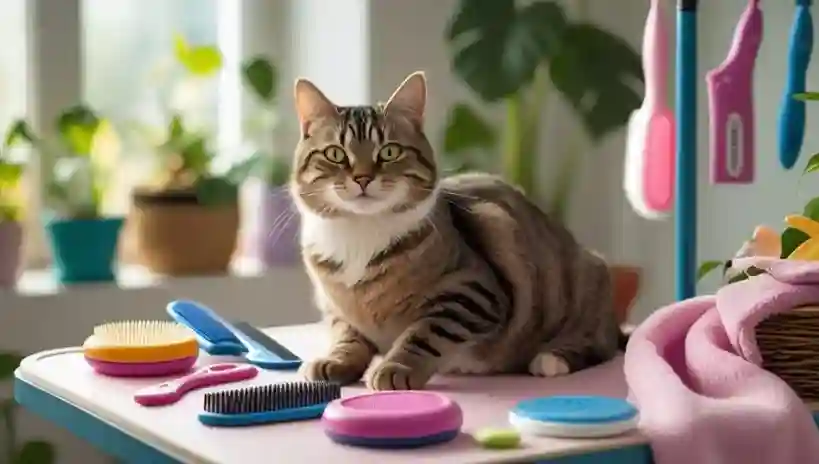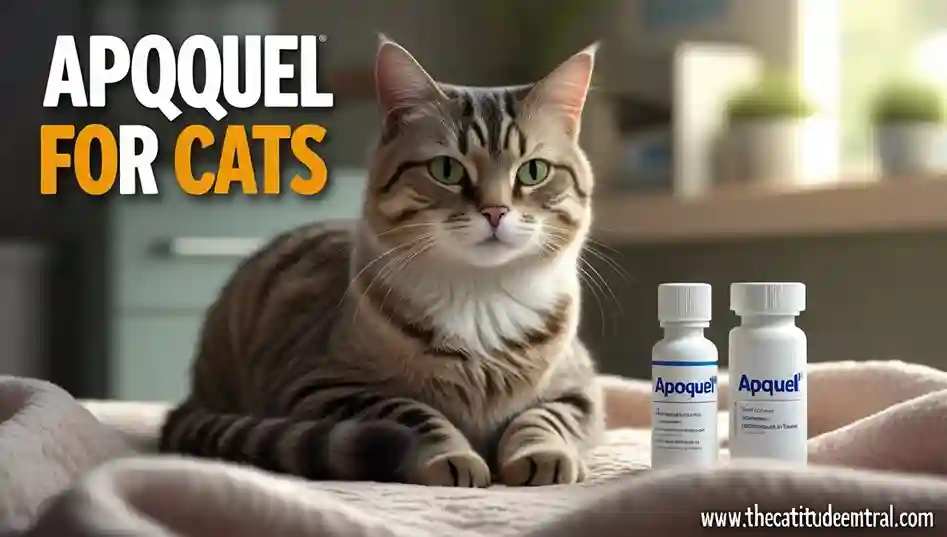Urinary blockage in cats is a life-threatening condition that demands immediate attention. Particularly common in male cats, this medical emergency can lead to severe complications, including kidney failure or even death, if not addressed promptly. Understanding the signs of urinary blockage in cats, knowing how to tell if your cat has a urinary blockage, and recognizing cat urinary blockage emergency symptoms are crucial for every cat owner.
This comprehensive guide will walk you through the causes, symptoms, treatments, and preventive measures, including the best food for cats with urinary blockage, to ensure your feline friend stays healthy.
What Is a Urinary Blockage in Cats?
A urinary blockage, also known as urethral obstruction, occurs when a cat’s urethra—the tube that carries urine from the bladder to the outside—becomes blocked, preventing the cat from urinating. This condition is more prevalent in male cats due to their narrower and longer urethras, which are more susceptible to obstructions. When a cat cannot empty their bladder, toxic waste builds up in the bloodstream, leading to severe health complications within 24–48 hours if untreated.
The causes of urinary blockages include:
- Urethral plugs: A combination of mucus, crystals, and debris that clog the urethra, often linked to feline idiopathic cystitis (FIC).
- Bladder stones: Mineral deposits that can lodge in the urethra.
- Inflammation or swelling: Often caused by stress or infections, leading to spasms that block urine flow.
- Rare causes: Urethral strictures or bladder cancer.
Recognizing the signs of urinary blockage in cats early can make the difference between life and death. Let’s explore these symptoms in detail.
Signs of Urinary Blockage in Cats
Early Warning Signs to Watch For
The initial signs of urinary blockage in cats can be subtle, often mistaken for other issues like constipation or behavioral changes. Cat owners must stay vigilant to catch these symptoms early:
- Frequent trips to the litter box: Cats may visit the litter box repeatedly but produce little to no urine. This is a key indicator of how to tell if your cat has a urinary blockage.
- Straining to urinate: Your cat may crouch for extended periods, appearing uncomfortable or in pain, with little or no urine output.
- Blood in the urine (hematuria): Pink, red, or brown discoloration in the urine can signal irritation or damage in the urinary tract.
- Urinating outside the litter box: Cats may pee in unusual places like sinks, bathtubs, or soft surfaces due to discomfort.
- Excessive grooming of the genital area: Cats may lick their genital region obsessively to alleviate pain or irritation.
- Vocalization or crying: Meowing or growling while attempting to urinate is a sign of distress and pain.
These early signs often indicate feline lower urinary tract disease (FLUTD), which can progress to a full blockage if not addressed. If you notice any of these behaviors, contact your veterinarian immediately.
Cat Urinary Blockage Emergency Symptoms
As the condition worsens, cat urinary blockage emergency symptoms become more severe and life-threatening. These include:
- Complete inability to urinate: A blocked cat may strain repeatedly without producing any urine, a critical sign requiring immediate veterinary care.
- Lethargy and hiding: Cats may become unusually tired, hide in unusual places, or show reluctance to move.
- Loss of appetite: Discomfort and toxin buildup can cause cats to refuse food or water, worsening dehydration.
- Vomiting: As toxins accumulate in the bloodstream, cats may vomit, indicating a severe stage of the blockage.
- Abdominal pain: A firm, painful bladder can be felt in the abdomen, and cats may react aggressively when touched.
- Weakness or collapse: In advanced cases, high potassium levels (hyperkalemia) can cause heart rhythm issues, leading to collapse or even sudden death.
If your cat exhibits any of these cat urinary blockage emergency symptoms, do not wait. Seek emergency veterinary care immediately, as untreated blockages can be fatal within 36–48 hours.
How to Tell If Your Cat Has a Urinary Blockage
Monitoring Litter Box Habits
One of the most effective ways to determine how to tell if your cat has a urinary blockage is by closely monitoring their litter box behavior. Keep an eye out for:
- Frequent visits with no urine: Place your cat in a confined space with a clean litter box for a few hours to check for urine production.
- Straining without results: Watch for prolonged squatting or straining without a wet patch in the litter.
- Changes in urine appearance: Look for blood, cloudiness, or a strong ammonia smell, which are red flags.
Physical and Behavioral Changes
Beyond the litter box, observe your cat’s overall behavior:
- Restlessness or agitation: Cats may pace or seem unable to settle due to discomfort.
- Hiding or withdrawal: A normally social cat may hide under furniture or avoid interaction.
- Vocalizing in pain: Loud meowing or crying, especially in the litter box, is a strong indicator of distress.
If you’re unsure whether your cat is urinating, contact your veterinarian immediately. Attempting to press on the bladder at home can cause a rupture and should only be done by a professional.
Causes of Urinary Blockage in Cats
Understanding the causes of urinary blockages can help you take preventive measures. The most common culprits include:
- Feline Idiopathic Cystitis (FIC): This stress-related inflammation affects up to 50% of blocked cats, forming plugs of mucus and crystals.
- Urinary crystals or stones: Struvite or calcium oxalate crystals can form in the bladder and obstruct the urethra.
- Urinary tract infections (UTIs): Though less common, infections can cause swelling and blockages, particularly in females.
- Stress and environmental factors: Changes in routine, multi-cat households, or lack of enrichment can trigger FIC and subsequent blockages.
- Diet and dehydration: Low water intake and high-mineral diets can promote crystal formation.
Male cats are at higher risk due to their anatomy, but factors like obesity, indoor lifestyles, and dry food diets also increase susceptibility.
Treatment for Urinary Blockage in Cats
Immediate Veterinary Intervention
A urinary blockage is a medical emergency requiring prompt veterinary care. Treatment typically involves:
- Catheterization: A veterinarian will insert a urinary catheter under sedation to relieve the blockage, allowing urine to flow.
- IV fluids: Fluids help flush out toxins and prevent dehydration.
- Pain management: Medications like buprenorphine or gabapentin are used to alleviate discomfort.
- Antibiotics or antispasmodics: These may be prescribed to treat infections or reduce urethral spasms.
Cats often require hospitalization for 3–5 days to ensure the blockage is fully resolved and they can urinate independently.
Surgical Options
For recurrent blockages, your veterinarian may recommend:
- Cystotomy: A surgery to remove bladder stones.
- Perineal Urethrostomy (PU): A procedure to widen the urethra in male cats, reducing the risk of future blockages.
While effective, PU surgery carries risks and does not prevent FLUTD symptoms, so discuss this option thoroughly with your vet.
Best Food for Cats with Urinary Blockage
Diet plays a critical role in preventing and managing urinary blockages. The best food for cats with urinary blockage focuses on increasing water intake, controlling urine pH, and reducing crystal formation. Here are some recommendations:
- Prescription urinary diets: Veterinary diets like Hill’s c/d, Royal Canin SO, or Purina Pro Plan UR are formulated to dissolve struvite crystals and maintain optimal urine pH. These diets are often lifelong requirements.
- Wet food over dry food: Canned food has higher moisture content (70–80%), promoting hydration and diluting urine to prevent crystal formation. Experts recommend feeding at least 50% of a cat’s diet as wet food.
- Low-magnesium diets: Reducing magnesium helps prevent struvite crystal formation.
- Water fountains: Cats are more likely to drink from running water, so consider investing in a pet water fountain to encourage hydration.
Always consult your veterinarian before changing your cat’s diet, as the wrong food can exacerbate urinary issues. Transition to new diets gradually to avoid stress.
Preventing Urinary Blockage in Cats
Prevention is key to avoiding the recurrence of urinary blockages. Here are actionable steps to reduce the risk:
Encourage Hydration
- Provide multiple fresh water sources around the house.
- Use a cat water fountain to entice drinking.
- Mix wet food with water to increase moisture intake.
Optimize Litter Box Environment
- Follow the “n+1” rule: one litter box per cat, plus one extra.
- Keep litter boxes clean, quiet, and spacious (1.5 times the cat’s length).
- Use unscented, low-dust litter to avoid irritation.
Reduce Stress
- Maintain a consistent routine to minimize environmental changes.
- Provide enrichment like toys, scratching posts, and vertical spaces.
- Use calming products like Feliway pheromone diffusers.
Regular Veterinary Checkups
- Schedule annual vet visits to monitor urinary health.
- Regular urine tests can detect crystals or infections early.
By addressing these factors, you can significantly lower the risk of signs of urinary blockage in cats reappearing.
FAQs About Urinary Blockage in Cats
How often should cats pee?
Most cats urinate 2–3 times per day, depending on their diet and water intake. Cats on wet food may urinate more frequently due to higher moisture content.
Can a cat urinary blockage go away on its own?
No, a urinary blockage is a medical emergency and will not resolve without veterinary intervention. Attempting to wait it out can lead to fatal complications within 24–48 hours.
What is the cost of treating a urinary blockage?
Treatment costs typically range from $750 to $1,000 for initial care, but recurrent blockages or surgeries like perineal urethrostomy can exceed $3,000. Consult your veterinarian for payment plans if needed.
Are male cats more prone to urinary blockages?
Yes, male cats are at higher risk due to their narrower urethras, which are more easily obstructed by crystals or plugs. Female cats can develop blockages, but it’s rare.
How can diet prevent urinary blockages?
A high-moisture diet, such as wet food, and prescription urinary diets can reduce crystal formation and maintain urinary tract health. Consult your vet for tailored recommendations.
Conclusion: Act Fast to Protect Your Cat
Urinary blockages in cats are a serious and potentially fatal condition, but early recognition of the signs of urinary blockage in cats can save your pet’s life. By understanding how to tell if your cat has a urinary blockage, watching for cat urinary blockage emergency symptoms, and feeding the best food for cats with urinary blockage, you can help your feline friend live a healthier, happier life.
Always act quickly if you suspect a blockage, and work with your veterinarian to implement preventive strategies. Your cat’s well-being depends on your vigilance and care.
Sources



